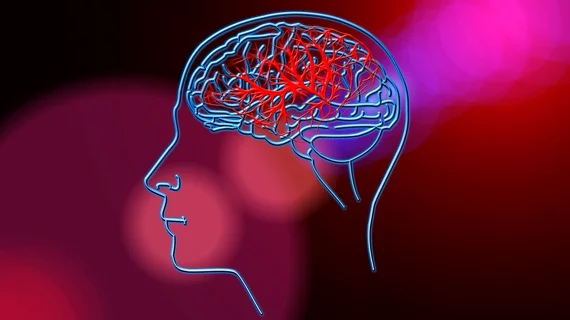'One-stop-shop' CT stroke protocol reduces scan time, contrast dose and radiation exposure
A “one-stop-shop” CT protocol that combines CT angiography of the head and neck with tomography perfusion (CTP) acquisition saves time and spares patients with suspected acute ischemic stroke from excess radiation exposure, new analysis shows.
While these scans are standard in acute ischemic stroke assessments, they are typically performed separately. However, integrating the CTA sequence into the CTP portion cuts scan time by nearly one minute and reduces the amount of iodinated contrast required to produce diagnostic quality images.
“It eliminates the need for two injections of iodinated contrast agents and obtains perfusion brain tissue data in one scan,” corresponding author Chun Ma, from the Department of Radiology at Deyang People’s Hospital in China, and colleagues explained. “Simultaneously, it provides clear visualization of the location and degree of stenosis in the head and neck vessels, which may reduce the contrast agent dosage, decrease the scanning time, and lower the radiation dose exposure.”
The one-stop-shop stroke solution in this study was completed on the NeuViz Epoch 512-slice wide detector CT system (Neusoft Medical, China), which enables the integration of both exams. To test its efficacy, a team of experts compared its use to standard protocols in a group of 100 patients with suspected acute ischemic stroke (divided evenly between the two protocols).
As anticipated, the group who underwent the combined protocol received 20% less iodinated contrast compared to the control group. Scan times were also shorter for the combined group, at 2.32 versus 3.23 minutes total acquisition time, and radiation doses were reduced in that group as well (4681.35 versus 5129.00 mGy-cm).
No significant differences in image quality were observed between the two protocols, the group noted.
“As a novel scan mode, the one-stop-shop protocol enables faster cerebral perfusion and vascular stenosis assessments in the time-critical management process of acute ischemic stroke, providing valuable imaging references for early clinical diagnosis, treatment, and prognosis assessment,” the group wrote, later adding that their findings indicate the protocol is “worth considering as the first examination for patients who suffer from acute ischemic stroke.”
The study abstract is available here.

